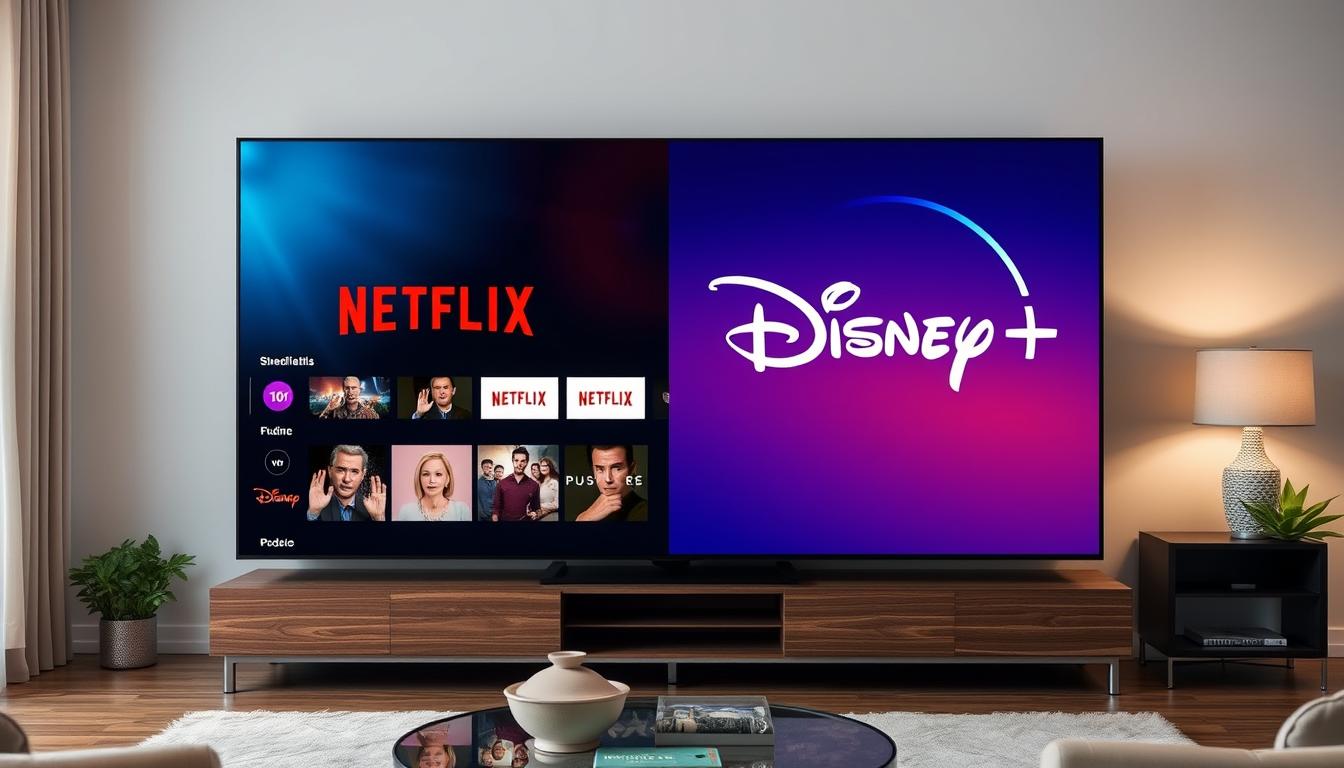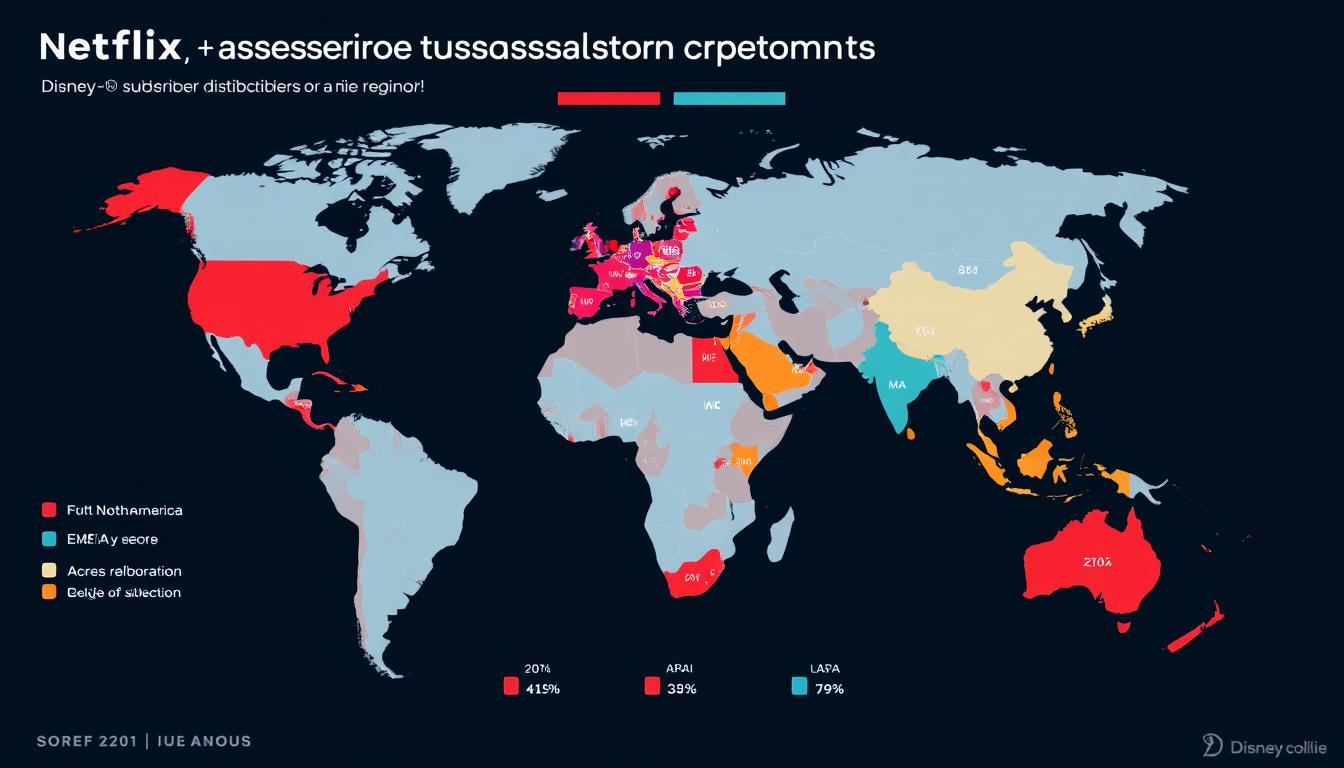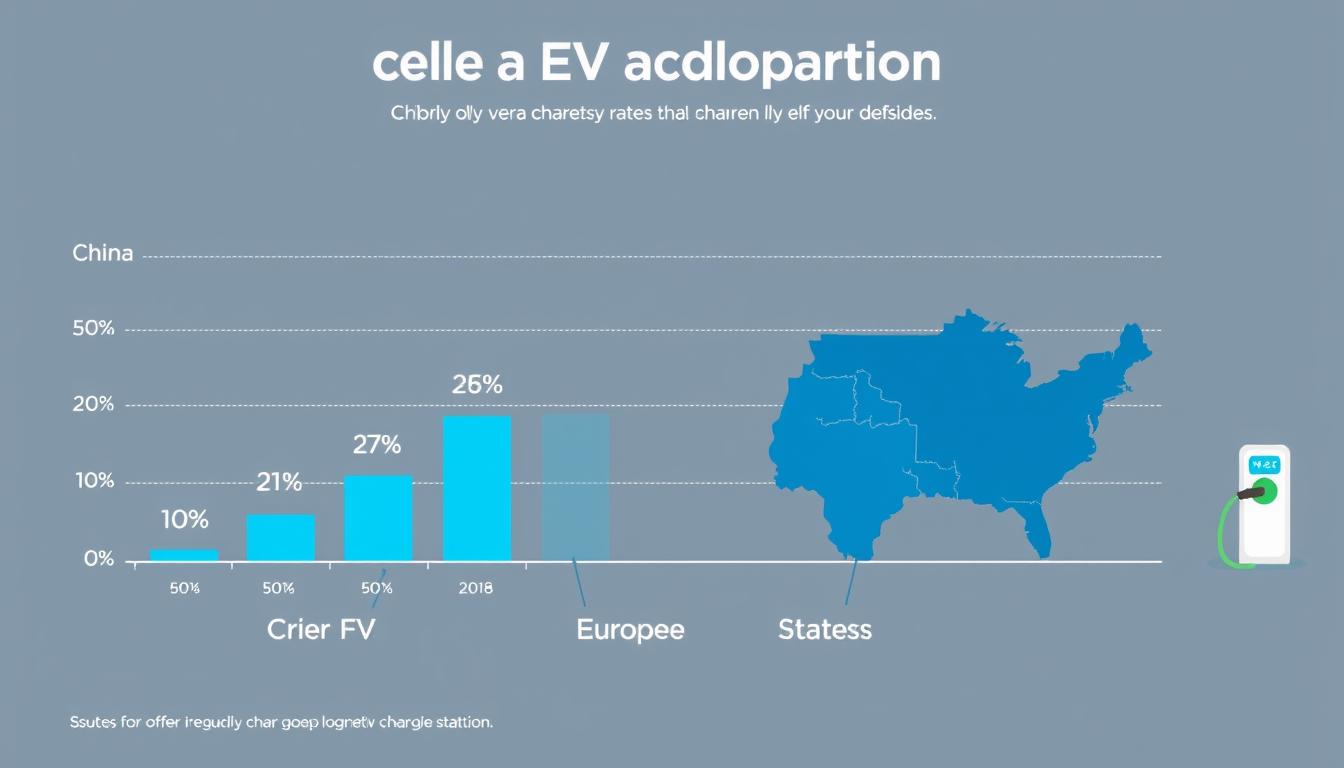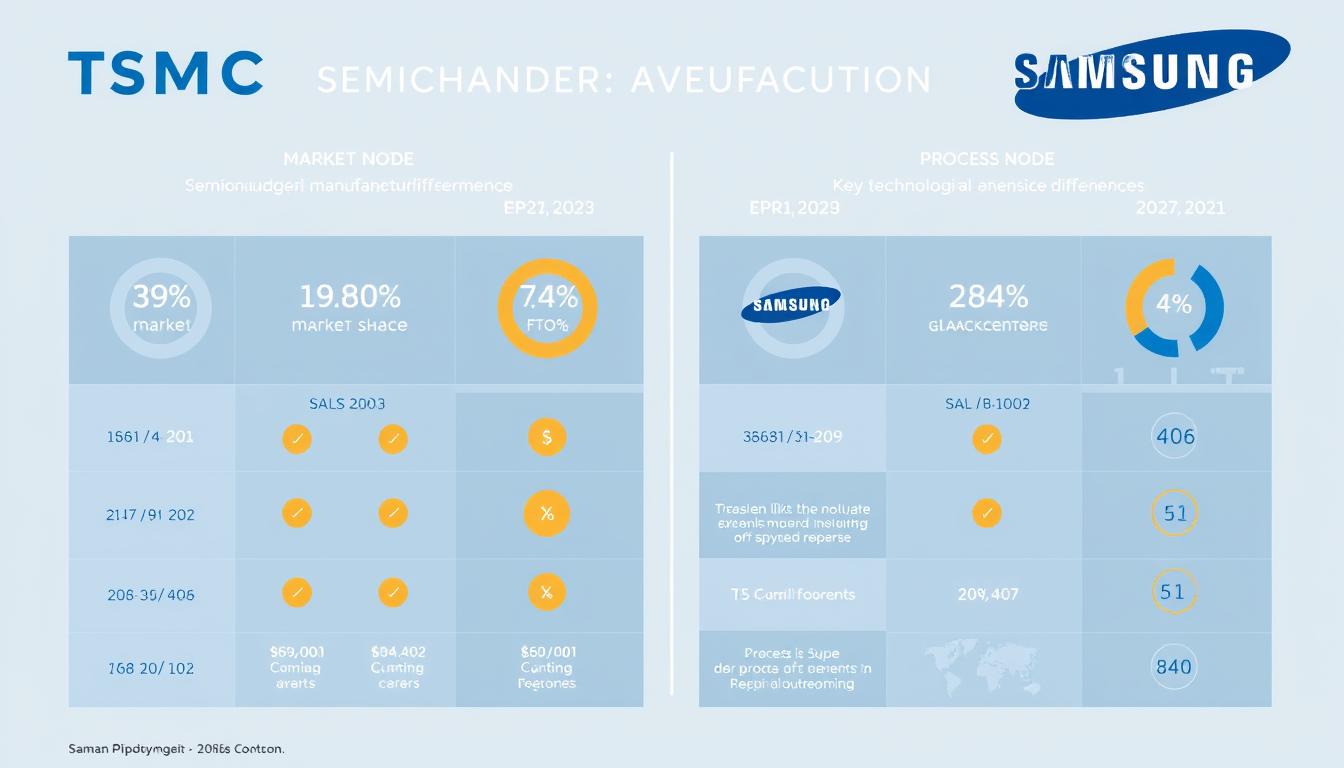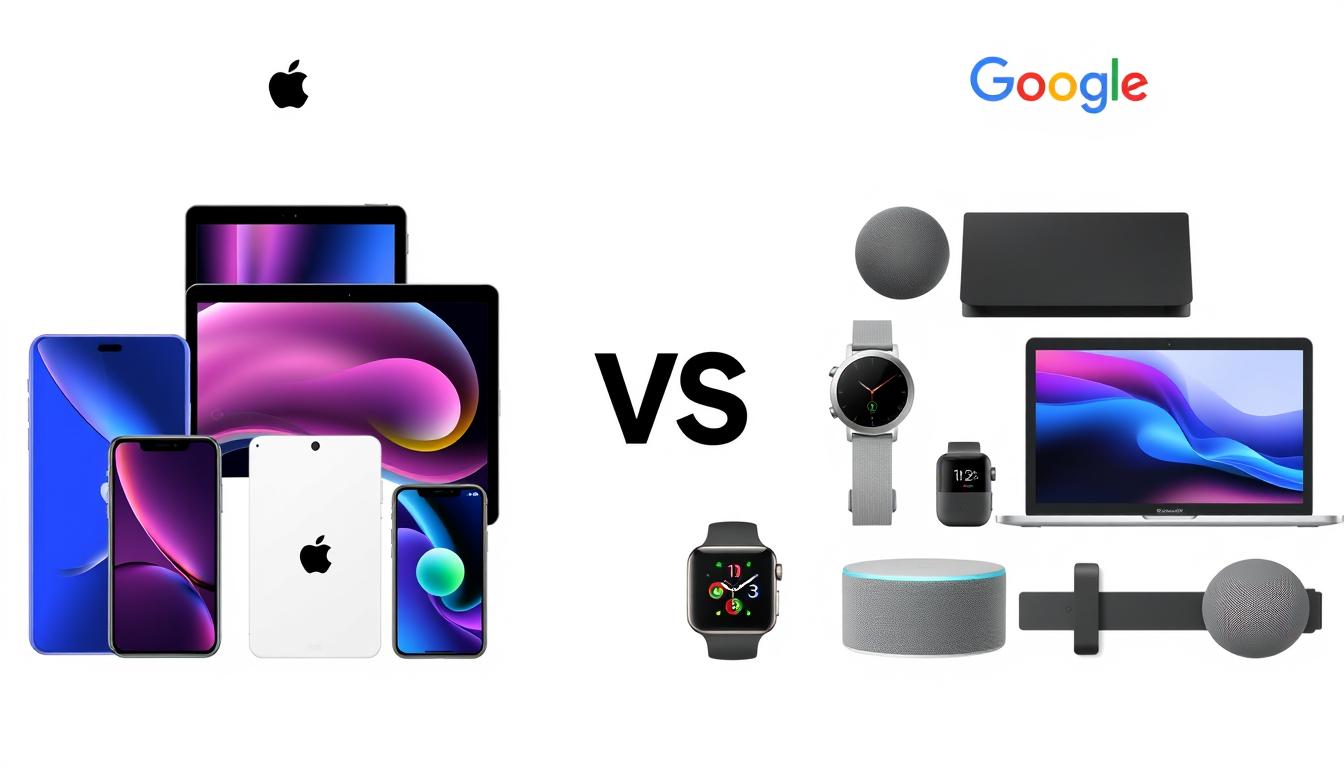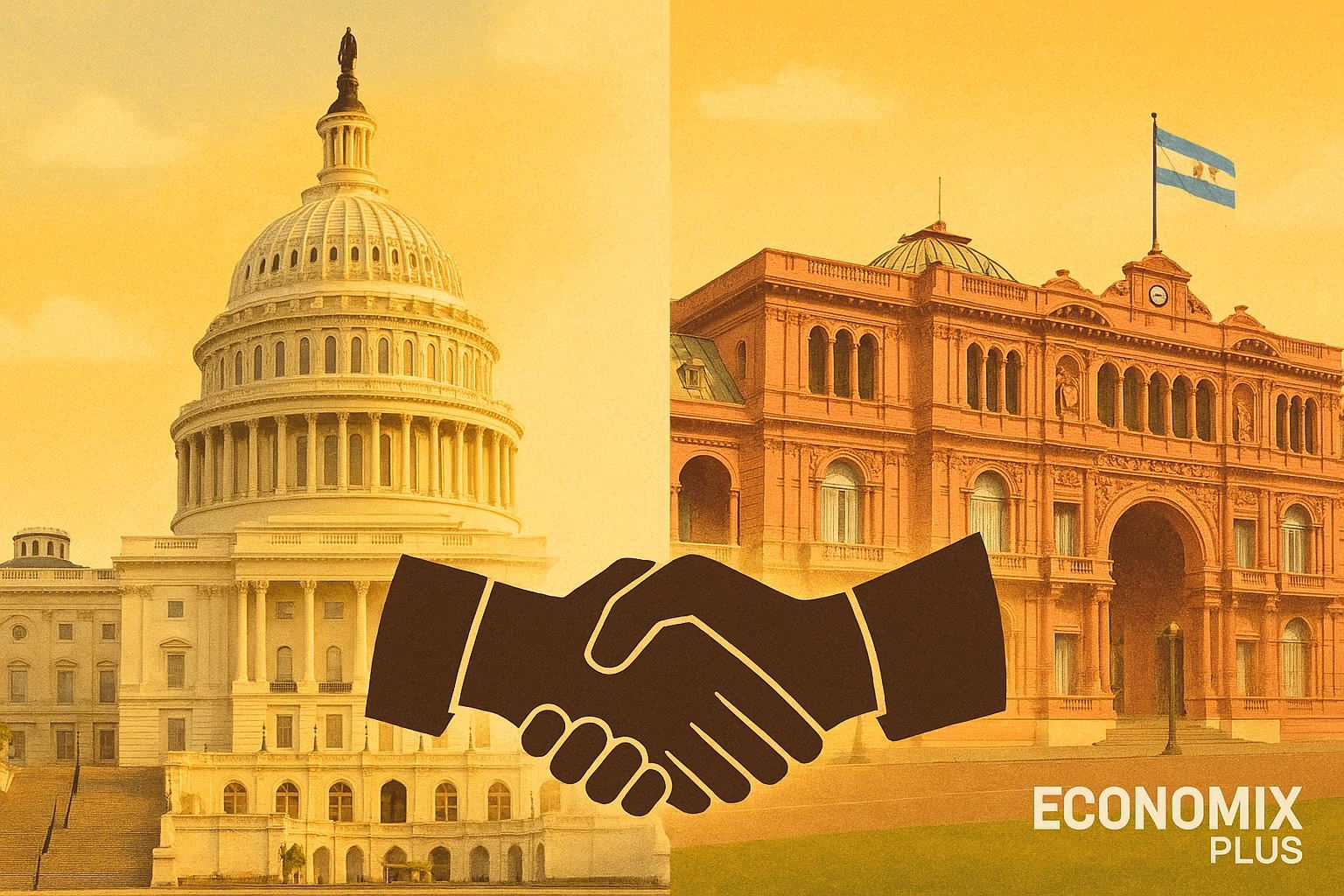The streaming landscape has transformed dramatically over the past decade, creating a high-stakes battle for viewer attention and subscription dollars. As traditional media consumption patterns shift, two giants stand at the forefront of this evolution: Netflix, the data-driven disruptor that pioneered the streaming revolution, and Disney+, the legacy entertainment powerhouse leveraging its unparalleled intellectual property. This analysis examines which company is better positioned to dominate the future of entertainment content through a comprehensive comparison of their strategies, strengths, and challenges.
Company Profiles and Foundational Strategies
Netflix: From DVD Rentals to Global Content Powerhouse
Founded in 1997 as a DVD-by-mail service, Netflix pivoted to streaming in 2007, fundamentally disrupting traditional entertainment distribution models. Its mission to “entertain the world” has driven aggressive international expansion and massive investments in original content production. Netflix’s strategy centers on leveraging user data to inform content decisions, personalize recommendations, and optimize the viewing experience across devices and markets.
With over $17 billion allocated annually to content creation, Netflix has built a formidable original programming ecosystem spanning multiple languages, genres, and formats. The company’s algorithm-driven approach to content development has produced global hits like “Stranger Things,” “Squid Game,” and “The Crown,” demonstrating its ability to create culturally relevant entertainment that transcends geographic boundaries.
Disney+: Legacy IP Meets Direct-to-Consumer Strategy
Launched in November 2019, Disney+ represents Walt Disney Company’s strategic pivot to direct-to-consumer entertainment after nearly a century of dominance in theatrical releases and traditional media. The platform leverages Disney’s vast intellectual property portfolio, including Marvel, Star Wars, Pixar, and National Geographic, alongside its classic animation library.
Disney’s streaming strategy differs fundamentally from Netflix’s, focusing on franchise development, cross-platform synergy, and bundled subscription offerings (with Hulu and ESPN+). Rather than relying primarily on algorithm-driven content discovery, Disney+ emphasizes brand recognition and franchise loyalty to drive engagement and reduce churn. The company has committed to spending $33 billion on content across all its platforms, with a significant portion dedicated to Disney+ originals.
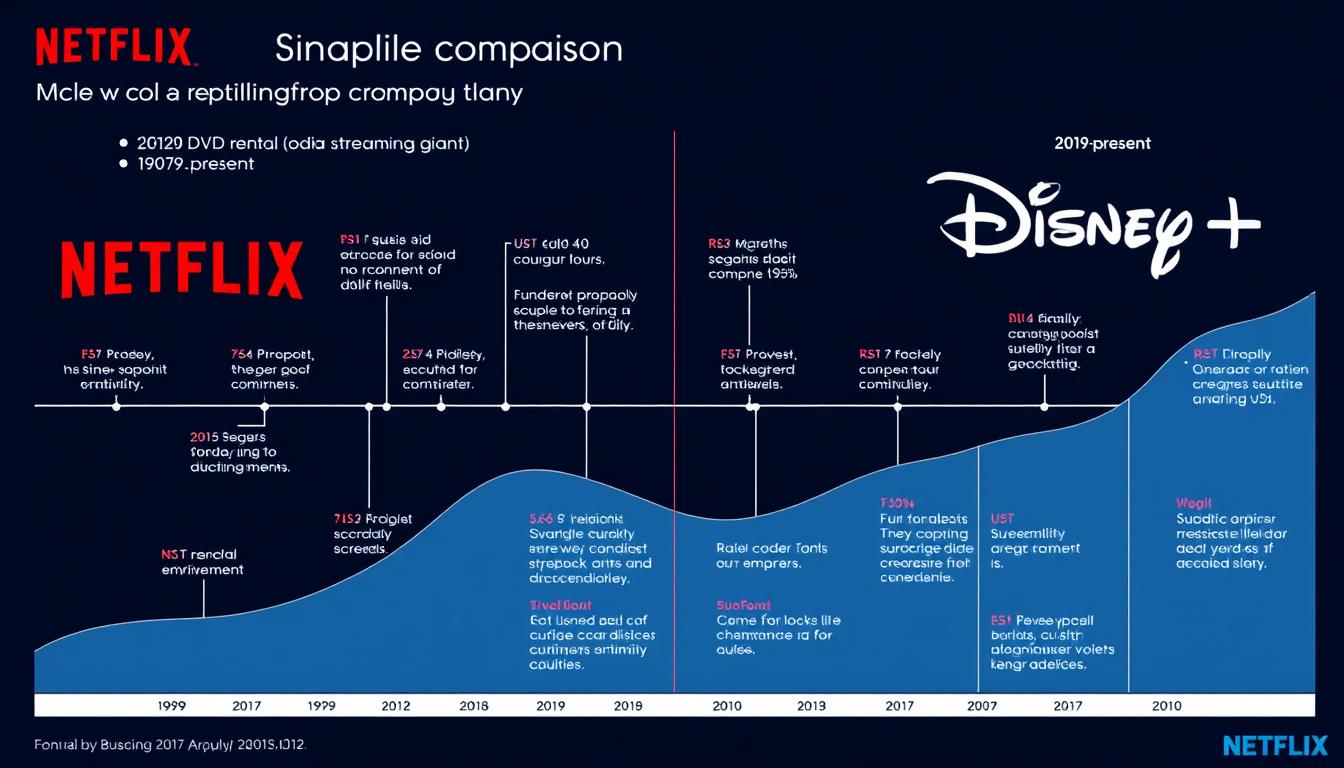
Core Focus and Industry Positioning
Netflix: Data-Driven Content Diversity
Netflix’s content strategy emphasizes breadth and diversity, spanning virtually every genre and audience segment. The platform’s recommendation algorithm serves as its primary competitive advantage, with approximately 80% of viewer activity influenced by its personalization technology. This data-driven approach allows Netflix to identify viewing patterns and content gaps that inform both licensing decisions and original production investments.
The company has embraced global storytelling as a core differentiator, producing local-language content that can cross borders. International hits like “Money Heist” (Spain), “Dark” (Germany), and “Squid Game” (South Korea) demonstrate Netflix’s ability to leverage regional production capabilities while creating content with global appeal. This strategy has proven particularly effective in emerging markets where local content options may be limited.
Disney+: Franchise-Focused Entertainment Ecosystem
Disney+ positions itself as the exclusive streaming home for the company’s beloved franchises and family-friendly content. Unlike Netflix’s genre-spanning approach, Disney maintains a more focused content strategy built around tentpole intellectual properties and recognizable characters. The platform serves as both a distribution channel for new content and an archive for Disney’s extensive back catalog.
The company leverages cross-platform storytelling to create an integrated entertainment ecosystem. Marvel series like “WandaVision” and “Loki” connect directly to theatrical releases, while “Star Wars” shows like “The Mandalorian” and “Ahsoka” expand the franchise between film installments. This approach creates multiple touchpoints for consumer engagement and drives subscription retention through anticipated content releases tied to broader narrative universes.
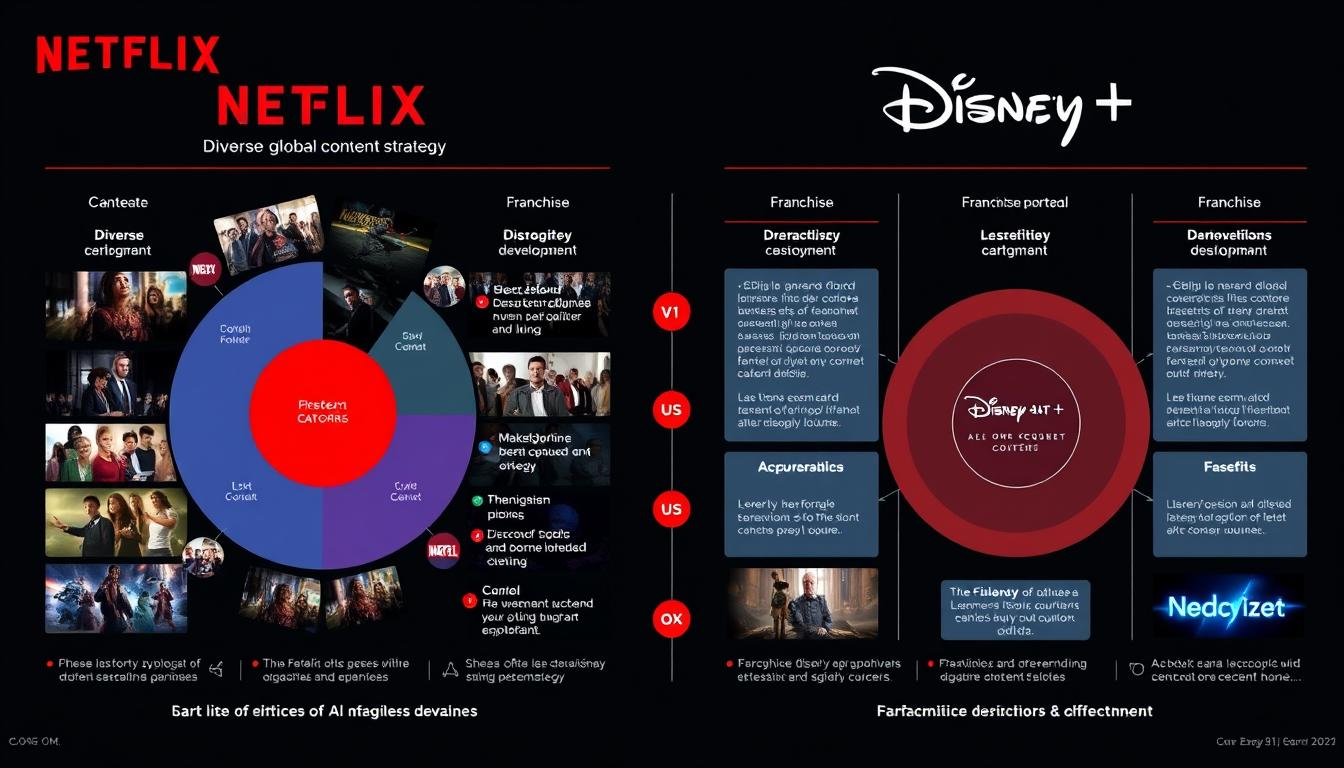
Strengths and Weaknesses Analysis
Netflix Strengths
- Superior recommendation algorithm driving 80% of viewer activity
- Established global production infrastructure across 30+ countries
- First-mover advantage with 270+ million subscribers worldwide
- Content diversity spanning all major genres and audience segments
- Technological innovation in streaming quality and user experience
- Proven ability to create global hits from diverse regional productions
Netflix Weaknesses
- High content spending ($17B annually) creating significant debt burden
- Increasing competition driving up content acquisition costs
- Volatile churn rates, particularly in mature markets
- Limited franchise development compared to competitors
- Vulnerability to password sharing (estimated 100M+ households)
- Dependence on third-party licensing for significant viewing hours
Disney+ Strengths
- Unparalleled intellectual property portfolio with global recognition
- Vertical integration across content creation, distribution, and merchandising
- Strong brand loyalty and multi-generational audience appeal
- Bundle strategy with Hulu and ESPN+ reducing churn
- Synergy with theatrical releases and theme park experiences
- Lower content acquisition costs for owned intellectual property
Disney+ Weaknesses
- Limited content diversity beyond family-friendly entertainment
- Slower international expansion (available in 60 countries vs. Netflix’s 190+)
- Higher content production costs for franchise tentpoles
- Less developed recommendation algorithm and personalization
- Profitability challenges with current pricing structure
- Franchise fatigue risk with heavy reliance on Marvel and Star Wars
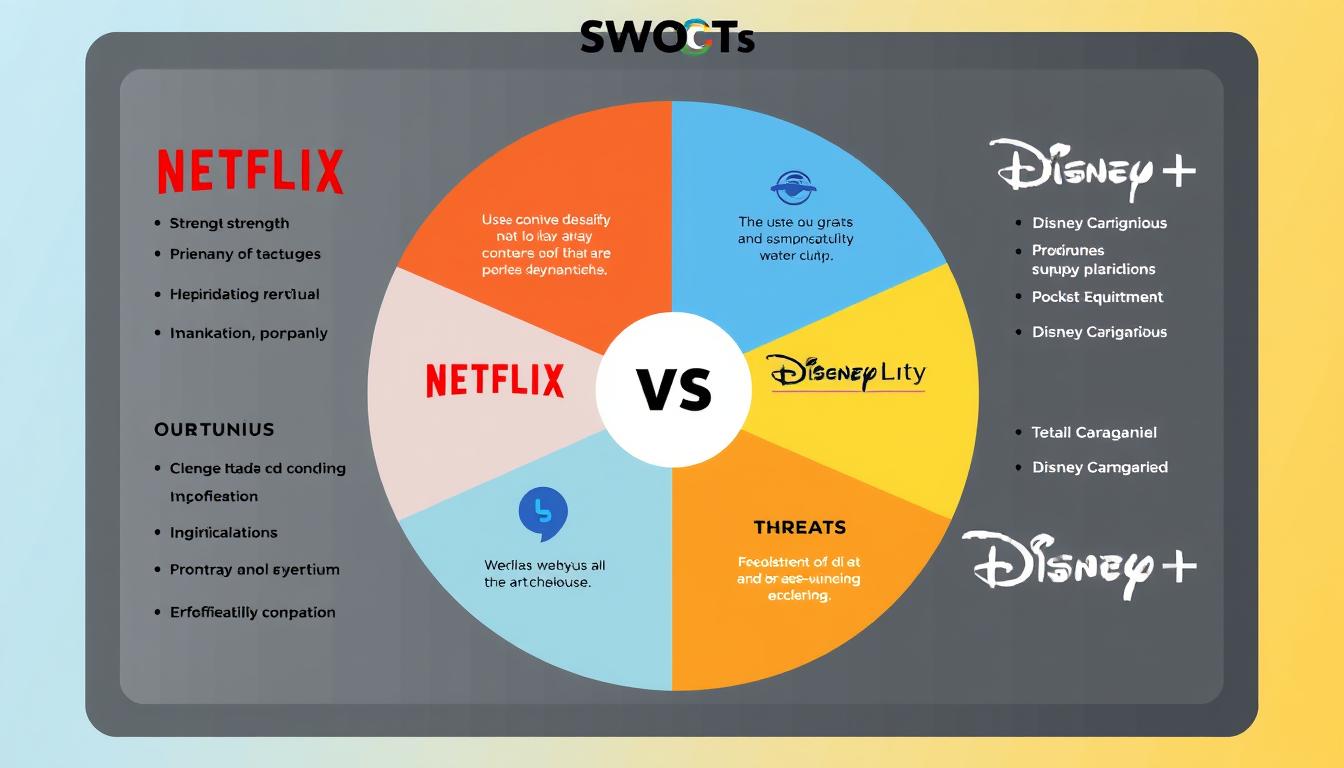
Innovation and Technological Infrastructure
Streaming Quality and User Experience
Netflix has historically led technological innovation in streaming, pioneering adaptive bitrate technology that optimizes video quality based on available bandwidth. The company operates its own content delivery network (Open Connect) to ensure reliable streaming across diverse network conditions. Netflix offers 4K/HDR content on its Premium tier, while Disney+ includes these enhanced formats across all subscription levels.
Both platforms have invested heavily in user interface design, though their approaches differ significantly. Netflix emphasizes personalization, with approximately 80% of viewing decisions influenced by its recommendation algorithm. Disney+ prioritizes brand-based navigation, organizing content around its major franchises and studios. User testing indicates Netflix maintains a slight edge in interface satisfaction (87% vs. 82%), though Disney+ scores higher for content discoverability among families.
Content Discovery and Interactive Features
Netflix has pioneered several interactive content formats, including choose-your-own-adventure experiences like “Black Mirror: Bandersnatch” and interactive children’s programming. The platform’s experimentation extends to its recommendation system, which employs over 1,300 recommendation clusters to match content with viewer preferences. This data-driven approach has proven particularly effective for surfacing niche content that might otherwise remain undiscovered.
Disney+ has focused its innovation efforts on social viewing experiences, with features like GroupWatch enabling synchronized playback across multiple locations. The platform has been more conservative in its approach to interactive content, though it has begun experimenting with enhanced viewing options for documentary content. Disney+ also leverages IMAX Enhanced technology for select Marvel films, providing expanded aspect ratios and enhanced audio.
| Technology Feature | Netflix Implementation | Disney+ Implementation |
| 4K/HDR Streaming | Premium tier only | All subscription tiers |
| Recommendation System | Advanced algorithm with 1,300+ taste clusters | Basic algorithm with franchise emphasis |
| Interactive Content | Multiple interactive titles across genres | Limited implementation, primarily in documentaries |
| Social Viewing | Limited implementation (Teleparty via third-party) | Native GroupWatch feature |
| Mobile Experience | Advanced mobile features, including partial downloads | Standard mobile experience with offline viewing |
| Gaming Integration | Netflix Games platform with 75+ mobile titles | No direct gaming integration |
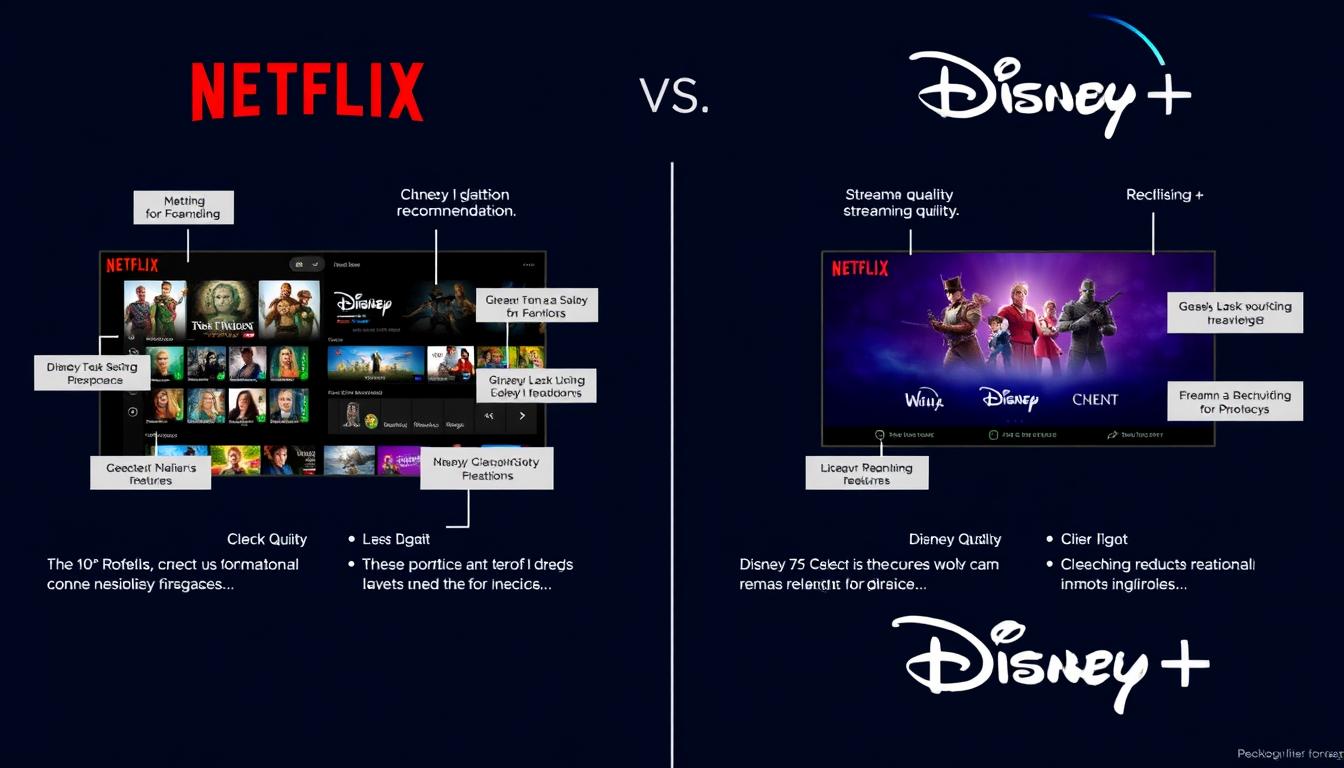
Sustainability and Content Ethics
Environmental Initiatives
Netflix has committed to achieving net-zero greenhouse gas emissions by the end of 2022 through its “Net Zero + Nature” plan. The company has focused on reducing Scope 1 and 2 emissions from its operations while addressing Scope 3 emissions through its production ecosystem. Netflix has also invested in carbon offset projects and renewable energy credits to compensate for emissions that cannot be eliminated directly.
Disney has established broader sustainability goals through its “2030 Environmental Goals” framework, which includes commitments to zero net emissions for direct operations, zero waste to landfills, and conservation-focused water management. Disney+ benefits from these corporate initiatives, though the streaming service has not published platform-specific sustainability metrics.
Content Representation and Inclusion
Netflix has made representation a central component of its content strategy, with dedicated funds for underrepresented creators and specific inclusion goals for productions. The company’s annual inclusion report tracks progress across on-screen representation, behind-the-camera diversity, and accessibility features. Shows like “Never Have I Ever,” “Bridgerton,” and “Heartstopper” demonstrate Netflix’s commitment to diverse storytelling.
Disney+ has faced both praise and criticism for its approach to representation. The platform has made strides with content featuring diverse protagonists, though it has occasionally faced controversy over its handling of LGBTQ+ representation in family-oriented content. Disney’s “Reimagine Tomorrow” initiative establishes company-wide inclusion goals, though implementation has varied across franchises and productions.

Financial Performance and Monetization Models
| Financial Metric | Netflix (FY 2023) | Disney+ (FY 2023) |
| Revenue | $33.7 billion | $5.8 billion |
| Content Spending | $17.1 billion | $9.2 billion |
| Operating Margin | 21.2% | -17.5% |
| ARPU (North America) | $16.25 | $7.31 |
| Ad-Tier Adoption | 23% of new subscribers | 42% of new subscribers |
| Debt Load | $14.4 billion | Part of Disney’s $48.3 billion total debt |
Netflix has achieved profitability through scale, with its mature business model generating positive operating margins despite massive content investments. The company’s introduction of an ad-supported tier in late 2022 represents a strategic shift to capture additional revenue streams and address price sensitivity in certain markets. Netflix has also implemented measures to monetize password sharing, potentially adding 100+ million households to its paying subscriber base.
Disney+ continues to operate at a loss as part of Disney’s broader direct-to-consumer strategy, though the company has committed to achieving profitability by the end of fiscal year 2024. The platform’s lower average revenue per user (ARPU) reflects its competitive pricing strategy and higher adoption of ad-supported tiers. Disney’s bundled offerings with Hulu and ESPN+ provide additional revenue stability while reducing customer acquisition costs across services.

Brand Reputation and Audience Perception
Critical Reception and Cultural Impact
Netflix has established itself as a significant force in prestige content, earning 428 Emmy nominations and 65 Oscar nominations since 2013. The platform’s original films and series have increasingly dominated awards conversations, with productions like “The Crown,” “The Queen’s Gambit,” and “All Quiet on the Western Front” receiving critical acclaim. Netflix has also created numerous cultural phenomena, with shows like “Stranger Things” and “Squid Game” generating massive social media engagement and merchandising opportunities.
Disney+ leverages Disney’s century-long cultural footprint while creating new touchpoints through original content. The platform’s flagship series “The Mandalorian” demonstrated its ability to extend beloved franchises in meaningful ways, introducing characters like Grogu (“Baby Yoda”) that quickly entered the cultural zeitgeist. Disney+ originals have received 152 Emmy nominations since the platform’s launch, though critical reception has varied across its franchise-based productions.
Consumer Trust and Brand Perception
Netflix maintains strong brand loyalty with a Net Promoter Score of 64, reflecting high customer satisfaction and willingness to recommend the service. The platform’s content diversity serves as both strength and occasional weakness, with some subscribers expressing concern about content discovery challenges within its vast library. Netflix’s algorithm-driven approach has created a distinctive brand identity centered on personalization and content variety.
Disney+ benefits from Disney’s established brand trust, particularly among families seeking age-appropriate content. The platform’s clear content guardrails (nothing above PG-13) provide certainty for parents, though this limitation also restricts its appeal among adult audiences seeking more mature entertainment. Disney+ has faced occasional criticism for perceived “formulaic” approaches to franchise development, particularly within the Marvel Cinematic Universe.
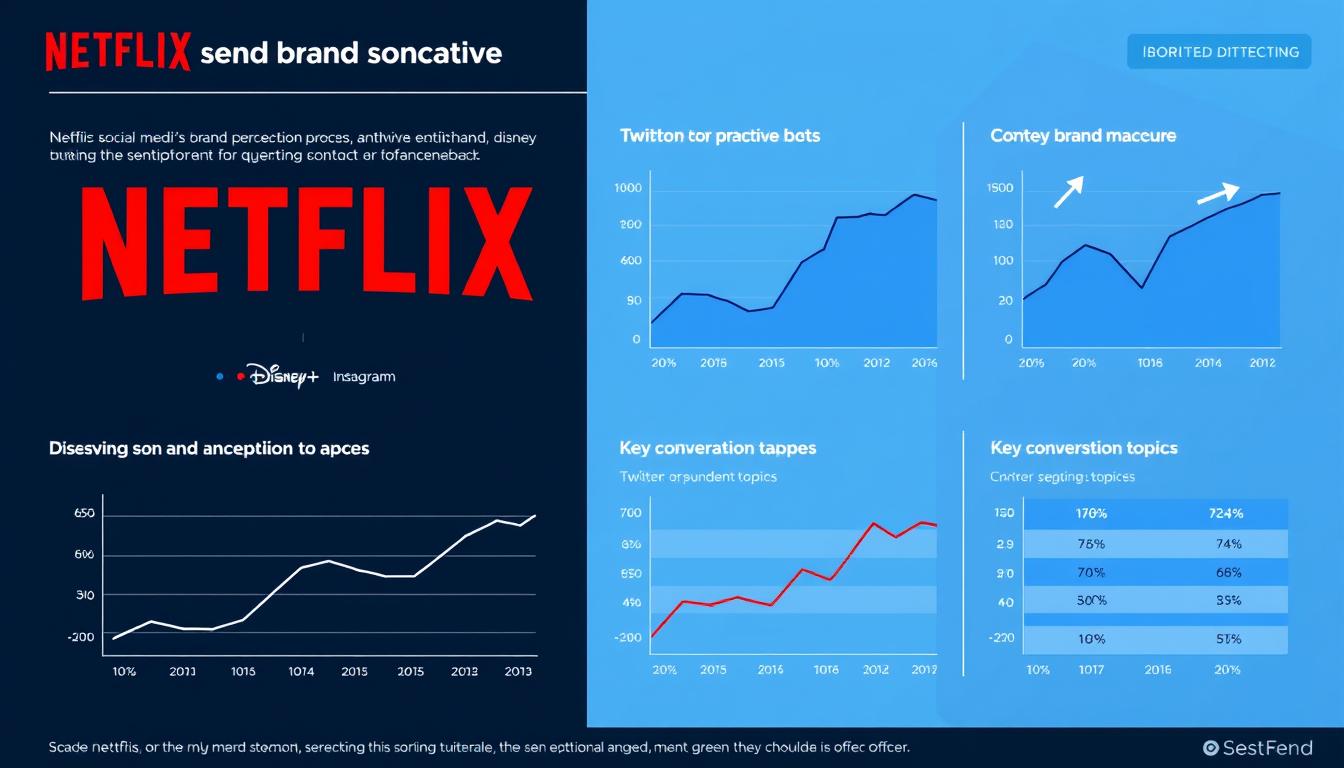
Production Ecosystems and Content Partnerships
Studio Operations and Production Capabilities
Netflix has developed a decentralized production ecosystem, operating studios in 30+ countries and maintaining production hubs in key markets like South Korea, Spain, and the United Kingdom. This distributed approach enables the company to create authentic local content while identifying stories with global appeal. Netflix’s production strategy emphasizes creator autonomy, with relatively limited executive intervention compared to traditional studios.
The company has invested heavily in post-production capabilities, including advanced visual effects and localization services that support global distribution. Netflix maintains one of the industry’s most extensive dubbing and subtitling operations, translating content into over 40 languages to support its international growth strategy.
Disney’s Vertical Integration Advantage
Disney+ benefits from Walt Disney Company’s unparalleled vertical integration across content creation, distribution, and merchandising. The platform leverages dedicated production units including Marvel Studios, Lucasfilm, Pixar, and Walt Disney Animation, each with established creative processes and technical capabilities. This structure enables coordinated storytelling across theatrical releases and streaming exclusives.
Disney has strategically realigned its production priorities to support its streaming ambitions, with each creative division now developing content specifically for Disney+. This shift represents a fundamental transformation of Disney’s business model, prioritizing direct-to-consumer relationships over traditional distribution channels. The company has also expanded its international production capabilities, though not as extensively as Netflix.
| Production Aspect | Netflix Approach | Disney+ Approach |
| Content Ownership | Mix of owned and licensed content | Primarily owned IP with minimal licensing |
| International Production | 30+ countries with local production teams | Expanding but primarily centralized in US/UK |
| Creator Relationships | Talent-friendly deals with creative autonomy | Franchise-focused with stronger brand guidelines |
| Production Budget Range | $2-20M per episode (series) | $15-25M per episode (franchise series) |
| Release Strategy | Primarily binge model with some weekly releases | Weekly episodic releases for most content |
| Cross-Platform Integration | Limited, primarily within Netflix ecosystem | Extensive with theatrical, parks, and merchandise |
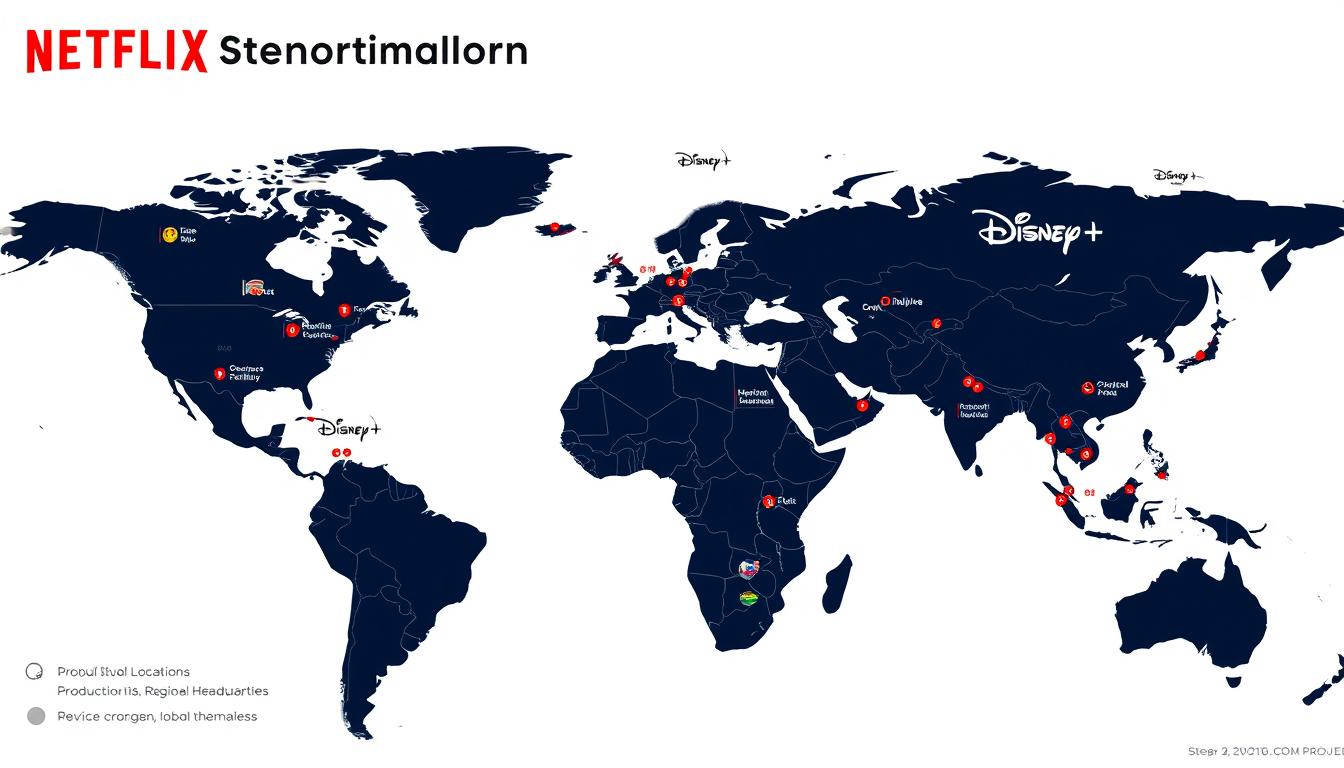
Strategic Risks and Long-Term Vision
Netflix: Competitive Threats and Future Bets
Netflix faces intensifying competition from both traditional media companies and technology giants. Amazon Prime Video’s integration with broader e-commerce benefits provides a unique customer acquisition advantage, while Apple TV+ leverages device ecosystem integration and premium production values. Regional competitors like Viu in Southeast Asia and Globoplay in Brazil present localized alternatives that may limit Netflix’s growth in emerging markets.
The company’s strategic response includes diversification beyond traditional streaming content. Netflix Games represents a significant expansion into interactive entertainment, with 75+ mobile titles available to subscribers at no additional cost. The platform has also experimented with live programming, including comedy specials and reality competition finales, signaling potential expansion into sports or other live events.
Disney+: Franchise Sustainability and Regulatory Challenges
Disney+ faces questions about the long-term sustainability of its franchise-focused strategy, with some evidence of audience fatigue for Marvel content in particular. The platform must balance franchise expansion with creative innovation to maintain subscriber engagement. Disney’s bundling strategy with Hulu and ESPN+ also faces potential regulatory scrutiny, particularly as streaming services increasingly resemble the cable packages they initially disrupted.
The company’s vision extends beyond traditional streaming to create an integrated entertainment ecosystem spanning digital and physical experiences. Disney’s investments in virtual reality and augmented reality technologies suggest potential future applications for immersive storytelling connected to Disney+ content. The platform’s integration with Disney’s theme parks and merchandise operations provides unique opportunities for experience-based engagement.
Key Future Battlegrounds
- Live Sports Rights: Both companies have expressed interest in sports content, with Disney leveraging ESPN+ integration and Netflix experimenting with live events.
- Gaming and Interactive Entertainment: Netflix has made early investments in mobile gaming, while Disney possesses extensive gaming licenses that could be integrated with Disney+.
- Advertising Technology: As both platforms expand ad-supported tiers, sophisticated targeting capabilities will become increasingly important for monetization.
- AI-Enhanced Production: Artificial intelligence applications in content development, post-production, and localization represent significant efficiency opportunities.
- Virtual Reality Integration: Immersive storytelling formats may create new engagement opportunities beyond traditional streaming.
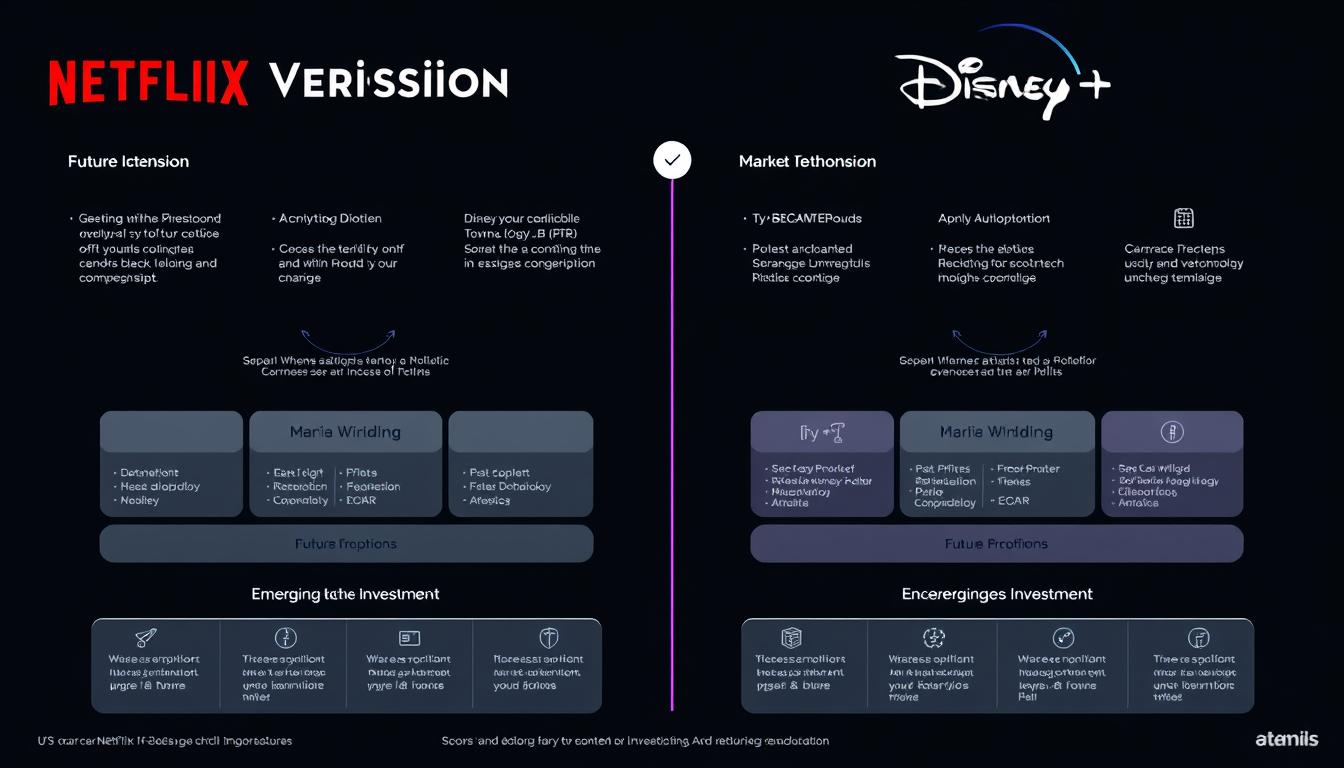
Conclusion: Divergent Paths to Entertainment Dominance
Netflix and Disney+ represent fundamentally different approaches to the future of entertainment content. Netflix’s algorithm-driven, globally distributed model prioritizes content diversity and personalization, creating a platform that can adapt quickly to changing viewer preferences across markets. Its first-mover advantage and technological infrastructure provide significant competitive strengths, though content spending and increased competition present ongoing challenges.
Disney+ leverages unparalleled intellectual property and vertical integration to create an entertainment ecosystem that extends beyond streaming to theatrical releases, theme parks, and merchandise. The platform’s franchise-focused strategy generates strong brand loyalty and cross-platform engagement, though it may limit appeal among viewers seeking more diverse content options.
The question of who will own the future of entertainment content likely has no single answer. Netflix’s scale and technological sophistication position it well for continued global growth, while Disney’s franchise depth and cross-platform integration create unique competitive advantages. As the streaming landscape continues to evolve, both companies will need to balance content investment with profitability pressures while adapting to changing consumer expectations and emerging technologies.
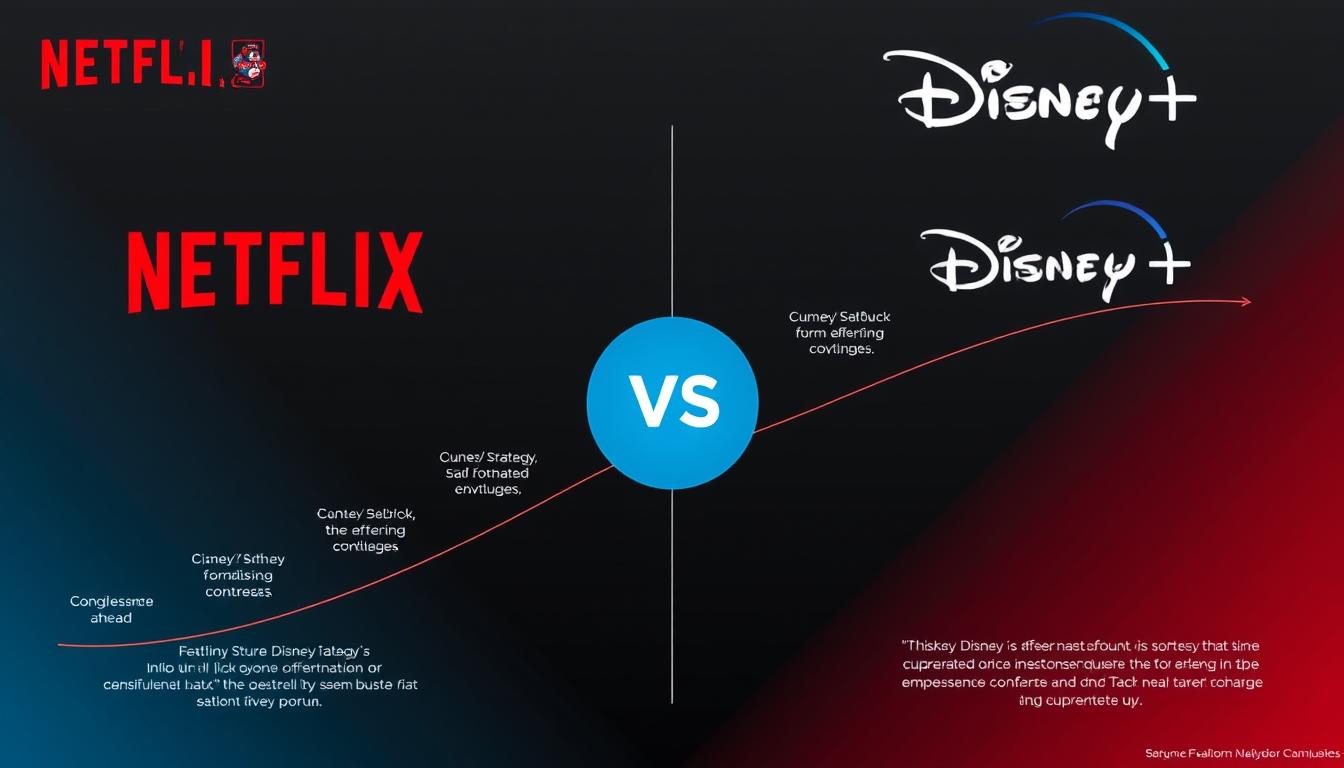
Frequently Asked Questions
How do Netflix and Disney+ compare in terms of global subscriber numbers?
As of Q2 2024, Netflix maintains a substantial lead with approximately 273.4 million global subscribers compared to Disney+’s 162.8 million. Netflix’s earlier market entry and broader international availability (190+ countries versus Disney+’s 60) contribute to this advantage, though Disney+ has demonstrated faster percentage growth since its 2019 launch.
Which platform offers better value for subscribers?
Value perception varies significantly based on viewer preferences. Netflix offers greater content diversity and quantity, with approximately 17,000 titles globally compared to Disney+’s 2,000 titles. However, Disney+ provides access to exclusive franchise content (Marvel, Star Wars, Pixar) and includes 4K streaming on all subscription tiers, while Netflix restricts this to its Premium plan. Disney+’s bundle options with Hulu and ESPN+ also provide additional value for subscribers interested in broader content options.
How do the content strategies of Netflix and Disney+ differ?
Netflix employs a data-driven approach to content development, using viewer metrics to identify genres, themes, and talent with broad appeal. The platform produces content across virtually all categories and audience segments, with particular emphasis on international productions that can travel globally. Disney+ focuses primarily on franchise development within its established intellectual properties, creating content that extends existing narrative universes while maintaining consistent brand identity. This approach prioritizes quality and brand alignment over quantity and experimentation.
What are the primary revenue models for each platform?
Both Netflix and Disney+ operate on subscription-based revenue models with tiered pricing options. Netflix offers three primary tiers: Standard with ads (.99/month), Standard (.99/month), and Premium (.99/month). Disney+ similarly offers ad-supported (.99/month) and ad-free (.99/month) options, with additional bundle packages including Hulu and ESPN+. Both companies have introduced advertising as a secondary revenue stream, though they differ in ad load and targeting capabilities. Disney benefits from additional revenue through merchandise and licensing connected to Disney+ content.
What future challenges do both platforms face?
Both Netflix and Disney+ face significant challenges in the evolving streaming landscape. Content costs continue to rise as competition intensifies, putting pressure on profitability. Subscriber growth is slowing in mature markets, requiring international expansion and new content strategies to maintain momentum. Both platforms must balance content investment with financial sustainability while adapting to changing consumer expectations. Additional challenges include potential regulatory scrutiny of bundling practices, password sharing monetization, and competition from emerging platforms and entertainment formats.
